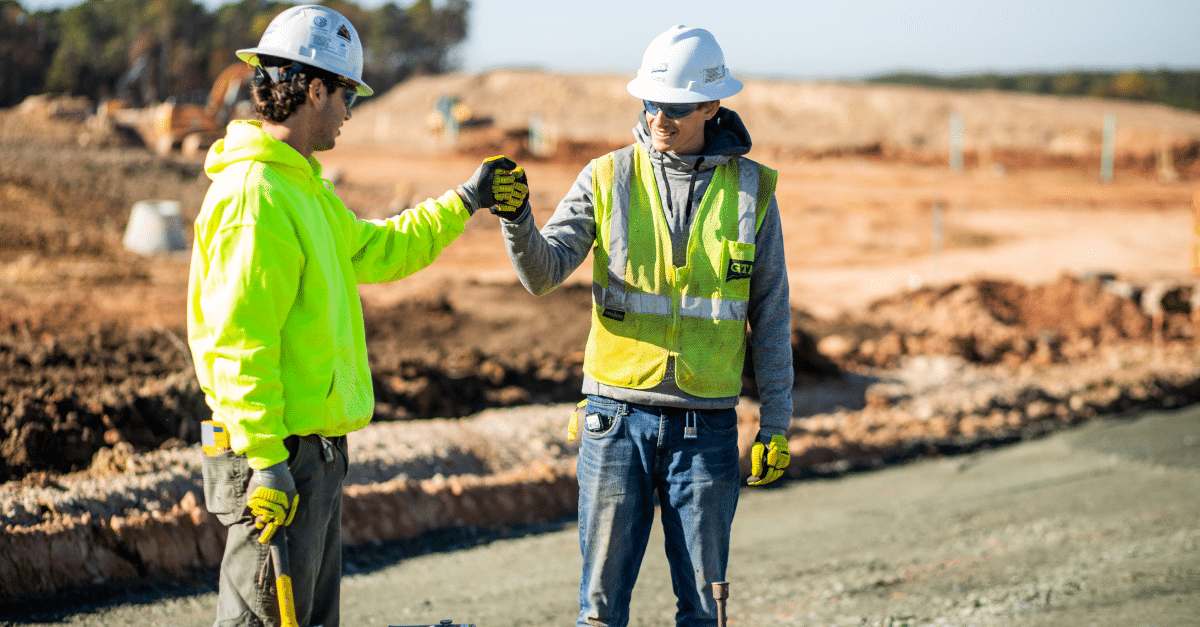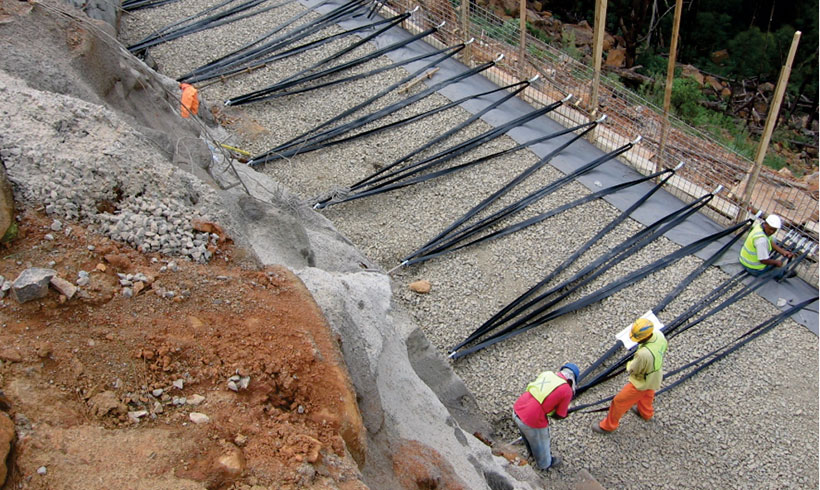The Main Principles Of Specialized Geotechnical Engineering Solutions
Table of ContentsThe Main Principles Of Specialized Geotechnical Engineering Solutions The 4-Minute Rule for Specialized Geotechnical Engineering Solutions7 Easy Facts About Specialized Geotechnical Engineering Solutions ExplainedSpecialized Geotechnical Engineering Solutions Things To Know Before You Get ThisSpecialized Geotechnical Engineering Solutions Can Be Fun For EveryoneSpecialized Geotechnical Engineering Solutions - An Overview
William Rankine, an engineer and physicist, created an alternate to Coulomb's planet pressure concept. Albert Atterberg established the clay consistency indices that are still made use of today for dirt classification. In 1885, Osborne Reynolds identified that shearing causes volumetric extension of thick materials and tightening of loose granular products. Modern geotechnical engineering is claimed to have begun in 1925 with the magazine of Erdbaumechanik by Karl von Terzaghi, a mechanical engineer and rock hound. Terzaghi also created the structure for theories of bearing capability of structures, and the concept for prediction of the rate of settlement of clay layers because of loan consolidation. Afterwards, Maurice Biot completely developed the three-dimensional soil combination concept, expanding the one-dimensional design formerly established by Terzaghi to more basic hypotheses and presenting the collection of fundamental formulas of Poroelasticity.
Geotechnical engineers investigate and figure out the homes of subsurface problems and materials.
The 15-Second Trick For Specialized Geotechnical Engineering Solutions
Geologic mapping and interpretation of geomorphology are typically completed in appointment with a geologist or engineering geologist. Subsurface expedition generally includes in-situ testing (for instance, the standard penetration test and cone infiltration examination). The excavating of test pits and trenching (especially for finding mistakes and slide aircrafts) may also be utilized to find out concerning dirt problems at depth. Still, they are sometimes utilized to permit a rock hound or designer to be lowered into the borehole for direct visual and hand-operated examination of the soil and rock stratigraphy. Different soil samplers exist to satisfy the requirements of different engineering projects. The conventional penetration examination, which utilizes a thick-walled split spoon sampler, is the most typical means to gather disturbed examples.

If the user interface between the mass and the base of a slope has an intricate geometry, slope security analysis is hard and mathematical service approaches are needed. Typically, the interface's specific geometry is unknown, and a simplified user interface geometry is assumed. Limited inclines call for three-dimensional designs to be analyzed, so most slopes are evaluated presuming that they are considerably vast and can be stood for by two-dimensional models.
The 7-Minute Rule for Specialized Geotechnical Engineering Solutions

Dimension of quantities and Our site examination of real problems. Layout adjustment per actual problems The empirical method is appropriate for building that has actually currently started when an unanticipated development happens or when a failing or crash looms or has actually currently occurred. It disagrees for tasks whose layout can not be changed during building.
Concepts of Geotechnical Design. Soil Technicians and Structures. Disturbed dirt homes and geotechnical design, Schofield, Andrew N., Thomas Telford, 2006.
The Best Guide To Specialized Geotechnical Engineering Solutions
Principles and Practice Home Page of Ground Improvement. Ground Renovation Concepts And Applications In Asia. Layout evaluation in rock technicians.
Cengage Learning, Stamford, 666 p. Atkinson, J., 2007. The mechanics of dirts and structures. The Observational Approach in ground engineering concepts and applications.
The Only Guide for Specialized Geotechnical Engineering Solutions
These records are tailored to fulfill the certain needs of a job and consist of design criteria and guidance for the construction of a variety of man-made frameworks. Along with supplying consultancy services covering areas such as incline security and load-bearing abilities for different products, these engineers undertake r & d activities to boost approaches, tools, materials expertise and analysis covering entire lifecycles (Specialized Geotechnical Engineering Solutions).
Engineering the residential or commercial properties and technicians of rocks consisting of the application of dynamics, liquid auto mechanics, kinematics and material technicians. This unites geology, soil and rock technicians, and architectural design for the layout and building of structures for a series of civil design tasks. This area entails forecasting the efficiency of structure dirt and rock to a tons imposed by a framework, while taking into consideration performance, economy and safety and security.
Rates of pay usually raise as your understanding and abilities expand, with standards directing to a graduate starting income of between 18,000 and 28,000 per year in the UK. This climbs to 26,000 to 36,000 with a few years of experience and after that getting to 40,000 to 60,000+ for elderly, legal or master engineers.
5 Simple Techniques For Specialized Geotechnical Engineering Solutions
With the appropriate application it is possible to understand the profession and gain access to a difficult yet fulfilling and crucial job. A geologist would certainly require to re-train i loved this to end up being a geotechnical engineer, although there is a lot of cross-over in between both professions, which can make this much easier. Geologists require to have an understanding of soils, rocks and various other materials from a scientific viewpoint, while geotechnical engineers story their expertise of matters such as dirt and rock technician, geophysics and hydrology and apply them to engineering and ecological jobs.
When beginning out, these engineers will certainly have a tendency to function on much less intricate tasks, developing expertise and experience prepared for more difficult work later. Geotechnical designers have a tendency to specialise in particular locations as they expand in experience, concentrating on particular frameworks such as trains, roadways or water. These designers likewise collaborate with eco-friendly energy, offshore and onshore oil and gas, nuclear power, and more.